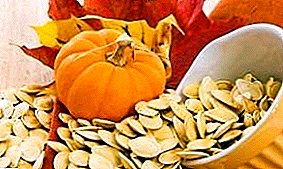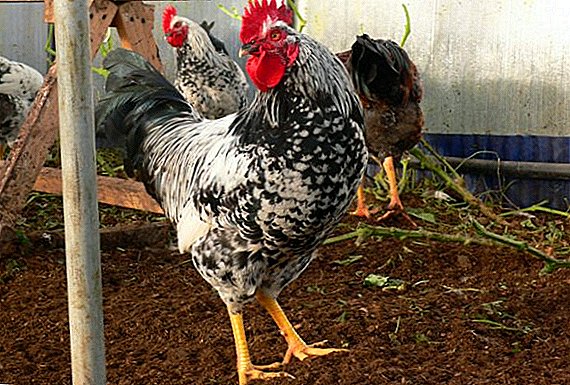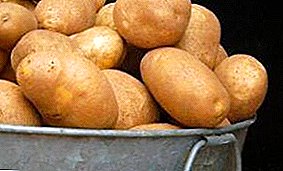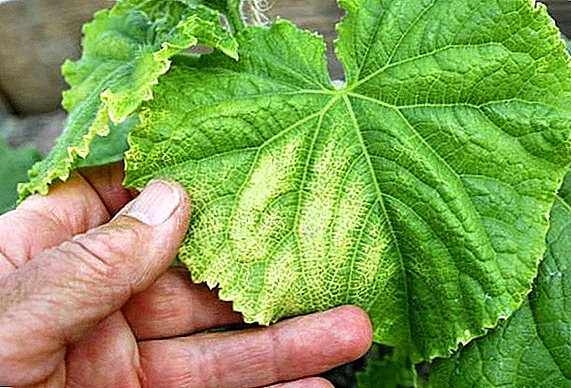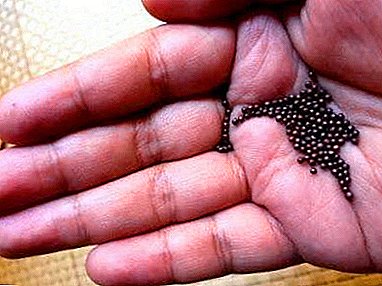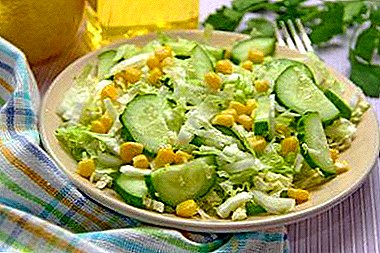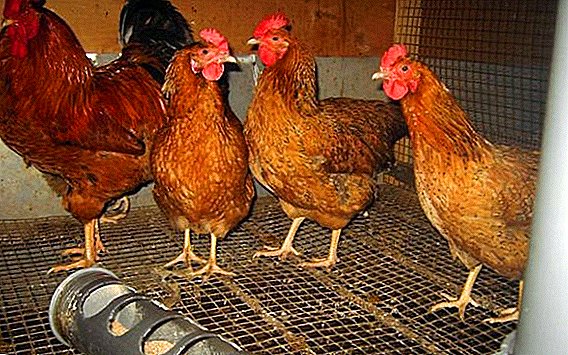 Chickens are the most common agricultural bird. They are bred for delicious dietary meat and healthy eggs. It is for the second quality that rhodonite chickens bypass many other representatives. After all, their egg production rates are really very high and stable. What features does this cross have, and how to properly contain these birds will be considered below.
Chickens are the most common agricultural bird. They are bred for delicious dietary meat and healthy eggs. It is for the second quality that rhodonite chickens bypass many other representatives. After all, their egg production rates are really very high and stable. What features does this cross have, and how to properly contain these birds will be considered below.
Inference history
The general classification of chicken breeds consists of such species:
- egg;
- egg and meat;
- broiler;
- decorative;
- fight
Rhodonites in their characteristics refer to the first species. The unique breed was bred at the beginning of this century (in 2008). It was originally created for the purpose of industrial maintenance in poultry factories, and soon - for individual household poultry farming in farms. The selection of different types of chickens to create an exceptional cross-country has been carried out on the Sverdlovsk poultry factory known throughout Russia in Yekaterinburg since 2002.  As a result of crossing German-laying hens of German cross-country, the Brown hawk and the hardy roosters of the American breed Rhode Island turned out to be excellent offspring with high productivity (egg production), justified by the nutritional value of eggs, and the resistance of birds to low temperature indicators of the environment and various diseases.
As a result of crossing German-laying hens of German cross-country, the Brown hawk and the hardy roosters of the American breed Rhode Island turned out to be excellent offspring with high productivity (egg production), justified by the nutritional value of eggs, and the resistance of birds to low temperature indicators of the environment and various diseases.
Did you know? There is a rare ornamental breed of completely black chickens - ayaam cemenia. The peculiarity of these birds from Indonesia is that, due to the action of the dominant gene, not only the plumage, skin, comb, legs, eyes, but also the meat, entrails and bones of birds, also succumbed to the effect of hyperpigmentation. Moreover, the blood flowing in their veins has an unusually dark color.
Description and distinctive features of the breed
Rhodonite chickens borrowed a lot of external signs from their parents, so amateur breeders may not immediately identify the breed.
Appearance and color
 The head of chickens rhodonite, as well as the skeletal body, is small in size, and the rib cage is characterized by a bulge. The color of the elastic feathers, closely adjacent to the body, has a beautiful light brown tint, smoothly turning into a soft white on the wings and tail, and the neck has a golden overflow.
The head of chickens rhodonite, as well as the skeletal body, is small in size, and the rib cage is characterized by a bulge. The color of the elastic feathers, closely adjacent to the body, has a beautiful light brown tint, smoothly turning into a soft white on the wings and tail, and the neck has a golden overflow.
The small leaf-shaped and flat comb, medium-sized earrings and earlobes have a red color. Chickens of this cross have yellow beaks of small length with a narrow lighter stripe of the same color in the center. The legs of birds are non-feathered.
Chickens Legbar, Hisex, Leggorn, Minorca, Maran are good egg laying characteristics.
Rooster and chicken: the differences
Individuals, male and female, especially newborns (already in the first 24 hours after hatching), can be easily distinguished: the rooster chickens are distinguished by a light yellow down with characteristic dark brown markings on the head, chicken chickens, on the contrary, are famous for a darker shade of fluff light streak on the back. The eyes of the boys and girls are surrounded by a contrasting light yellow and dark brown color, respectively. Rooster rhodonite differs from chicken in its weight characteristics: the weight of adults reaches 3 kg and 2 kg, respectively. 
Character
Activity and mobility combined with friendliness and serenity - these are the main traits of chickens rhodonite. They quickly and painlessly adapt to new conditions, the owners, as well as neighbors in the yard for walking. Rhodonites are not shy and not aggressive.
Did you know? The world-famous cockerel Mike, who lived 18 months after his head was cut off, remained alive thanks to unaffected parts of the base of the brain and one ear. Since 1947, this experiment could not be repeated to anyone: the birds died a maximum of a couple of days.
Annual egg production
The average egg production is 280-300 eggs per year. Have a grayish-brown tint and a weight of about 50-60 g each. Since the age of four months, laying hens are especially productive in the first 80 weeks of the life cycle (the number of eggs when chicken weighs 2 kg reaches 350 pieces). After that, to resume a high level of egg production, special vaccination is given to the chickens with the introduction of anti-aging drugs. One male in the poultry house should have 4 females each.
Find out at what age pullets begin to rush, and how many eggs you can get from them, as well as the benefits of chicken eggs.
Hatching instinct
Due to the fact that the main goal of the breeders was to breed an industrial type of hens, the instinct of incubation of eggs at this cross-country is poorly developed, and accordingly, the reproduction of hens is carried out by incubation method or lining eggs under the hen of another breed. 
Conditions of detention
Unpretentiousness to the conditions of existence makes these chickens particularly attractive for breeding. You can grow them in a home barn or in a specially equipped chicken coop with an obligatory paddock.
Important! If we talk about chickens, then you can let them go for a walk (not longer than 2 hours) from two weeks of age, and when they are one month old, you can start walking all day long.
Coop Requirements
The size of the barn or chicken coop should be spacious. No more than 20 chickens for every ten square meters of area (wall height from 1.7 to 1.9). The floor in the house is recommended to cover with sand, moss peat particles, sawdust or wood chips.
Obligatory conditions of chickens rhodonite is a good ventilation of their living space, free exit, as well as the absence of drafts. To achieve the first goal, it will be enough to equip the chicken coop with a window leaf or a hole with a tight and dense mesh (preferably on the south side).
Check out the tips on equipping the chicken coop: selection and purchase; self-production and arrangement of the chicken coop, the creation of ventilation.
Perches in the form of crossbars and beams should be located opposite the manhole with an elevation of 1 meter. Feeders and drinkers are better equipped with bumpers so that the birds do not turn them over. Experts recommend making nests in such a way that each of them accounted for 2-3 laying hens.  Good resistance to low temperatures (the ability to carry eggs even at sub-zero temperatures) does not cancel the potential heating of the coop during the cold season. Experts recommend not to lower the temperature in the house below zero.
Good resistance to low temperatures (the ability to carry eggs even at sub-zero temperatures) does not cancel the potential heating of the coop during the cold season. Experts recommend not to lower the temperature in the house below zero.
Did you know? Chickens can be carried only in the presence of artificial light or daylight. Even if the laying time had to be at night, the bird will wait until the sun rises, and only after that will complete the entire process.
Courtyard for walking
A feature of this cross is the impossibility of keeping in cellular conditions and the need for regular walking. A specially protected high-net zone near the chicken coop, where they can not only walk, but also communicate with other breeds of chickens - this is exactly what rhodonites need for normal and active life. Fencing is necessary so that the birds do not fly away, since they can easily overcome the barrier of one and a half meters in height.
How to endure cold, heat
It would seem that chickens, created for survival in harsh climatic conditions, tolerate cold and bad heat. In fact, it is not.  Although theoretically the layers of this breed can even sweep at a frost of 20 degrees, they will not be enough for a long time, since the exhaustion of animals in this case increases. The same consequences will occur if you do not provide ventilation during the summer season (a dangerous threshold is 28 degrees of heat and higher).
Although theoretically the layers of this breed can even sweep at a frost of 20 degrees, they will not be enough for a long time, since the exhaustion of animals in this case increases. The same consequences will occur if you do not provide ventilation during the summer season (a dangerous threshold is 28 degrees of heat and higher).
We advise you to read about the content of chickens in the winter: winter care, the construction of a winter chicken coop.
What to feed
At first, birds need to be given special food, and newly hatched chickens have slightly different requests than adults. Next, we take a closer look at how their diet differs, and from what moment chicks can be transferred to regular food.
Youngsters
For 6 hours after the birth of chickens are usually deposited in a box with infrared heating, where after drying they feed finely chopped boiled eggs. And only after this time, the chicks can be given wheat groats. Unlike eggs, which must be removed after half an hour, the cereal can be left on a permanent basis. After a day, the diet can already be varied: add cottage cheese in combination with finely chopped nettle or greens from the vegetable garden (green onions are particularly well suited).
Learn more about feeding chickens from the first days of life.
As they get older, starting from day 10, the menu includes fish and meat, which will provide the required amount of protein in the chickens body. In the first days of life, chickens rhodonite are watered not just with water, but with the addition of potassium permanganate in such quantity that the liquid is slightly pink in color. Change it costs several times a day. 
Adults
Already adapted and more independent birds to increase productivity, you need to adhere to a full-fledged diet, which includes the following components: wheat, oatmeal and corn, chalk, limestone, ground shell or eggshell, green grass and vegetables.
Important! Calcium is necessary for samochka in order for the eggshell to be stronger. With its lack of hard shell in the egg liquid mass may not be at all.
Special pre-prepared feed for birds is also a good option, which will provide the birds with all the nutrients and mineral elements. The rate of feeding frequency is twice a day, but the quantitative characteristics of the portions should be such that the birds eat the portion in 30 minutes. If you eat faster - do not starve them, add some more food. When the feed, on the contrary, remains, be careful: overeating too badly affects the vital activity and productivity of birds.  The availability of clean water, especially in places of walking, is one of the most important parts for the care of chickens rhodonite. It would be advisable to change it every day, and in hot weather - no less than twice a day. Experts also recommend a weekly feeding of chickens with a decoction of medicinal herbs like chamomile and calendula, or with a usual solution of potassium permanganate.
The availability of clean water, especially in places of walking, is one of the most important parts for the care of chickens rhodonite. It would be advisable to change it every day, and in hot weather - no less than twice a day. Experts also recommend a weekly feeding of chickens with a decoction of medicinal herbs like chamomile and calendula, or with a usual solution of potassium permanganate.
We advise you to read about the feeding of laying hens: the rate of feed for a day, how to make feed for laying hens at home.
Mixed soup with the addition of fish or meat broth is also a good dish for rhodonites. Small stones or gravel added to food have a beneficial effect on the gastrointestinal tract of birds.
Propensity to disease
Since the breed is very hardy, it has good immunity, which ensures high resistance to diseases. If inflammatory processes occur in the bird's body (which is quite rare), then there is an error in the conditions of care and maintenance of chickens. If on time (at least once a month) to clean the chicken coop, whitewash the walls and wooden components of the poultry house in spring and autumn, you can safely avoid the occurrence of infection with any infections.
Periodic preventive examinations include examining the feathers of chickens for the presence of foreign objects, including ticks and other insects. If any abnormality is found, the diseased parts of the body are treated with insecticides. Bathing in the sand and ashes, as a peculiar method of chicken hygiene, allows you to get rid of parasites, so it is advisable to put on the territory of walking wide knocked down boxes with such fillers.  It is the chicks that are in danger of being affected by various kinds of diseases. But sometimes adults are subject to malfunction of the immune system.
It is the chicks that are in danger of being affected by various kinds of diseases. But sometimes adults are subject to malfunction of the immune system.
Among the most common infections and inflammations are the following:
- pullorosis, a frequent consequence of which is fatal (eyes closed, wings down, lack of appetite, too frequent breathing, thirst, diarrhea, or, conversely, constipation);
- gastroenteritis (symptoms of intestinal upset);
- mycoplasmosis (swelling under the eyes, sounds and screams unusual for a bird before);
- parasitic inflammation caused by worms, ticks, fleas or bedbugs (diarrhea, loose stools, bloating, vomiting, foul odor from the beak, general lethargy, fatigue and exhaustion);
- pasteurellosis (foamy nasal discharge with mucus, fever, yellow feces);
- salmonellosis (depression, drowsiness, muscular weakness, difficulty breathing, nasal discharge, sometimes tearing);
- coccidiosis - damage to the mucous membrane of the gastrointestinal tract of the bird (frequent diarrhea with mucous membranes, and sometimes blood elements);
- bronchitis (low or no egg production, cough, wheezing, apathy, drowsiness, difficulty breathing, constant opening of the beak, the subsequent addition of conjunctivitis and rhinitis);
- tuberculosis (a sharp decrease in mass due to a complete lack of appetite, pallor of the comb, shriveled earrings).
Read also about the treatment of diarrhea and helminthiasis in chickens.
 Having discovered the above symptoms of bird intoxication, it is necessary to take urgent measures and call a veterinarian, because the infection from one chicken very quickly passes to the second, thus affecting the entire flock and ending with a fatal outcome.
Having discovered the above symptoms of bird intoxication, it is necessary to take urgent measures and call a veterinarian, because the infection from one chicken very quickly passes to the second, thus affecting the entire flock and ending with a fatal outcome.
Salmonellosis is the most dangerous of all possible diseases, as it can be transmitted to humans through infected eggs and meat.
Advantages and disadvantages
Cross-hens rhodonite created for those who have to grow birds in harsh cold climates.
Advantages:
- lack of seasonal changes in productivity;
- unpretentiousness;
- survival in harsh environments;
- productivity even at sub-zero temperatures;
- friendly character.
Disadvantages:
- too hard meat for culinary use (suitable only for soup);
- the impossibility of natural breeding chickens rhodonite.
Video: chicken eggs rhodonite
Breeding chickens rhodonite: reviews

Rhodonite chickens are an excellent choice of agricultural poultry for those poultry farmers whose goal is to increase the amount of egg product, and the farm is located in a region with cold and long winters.


